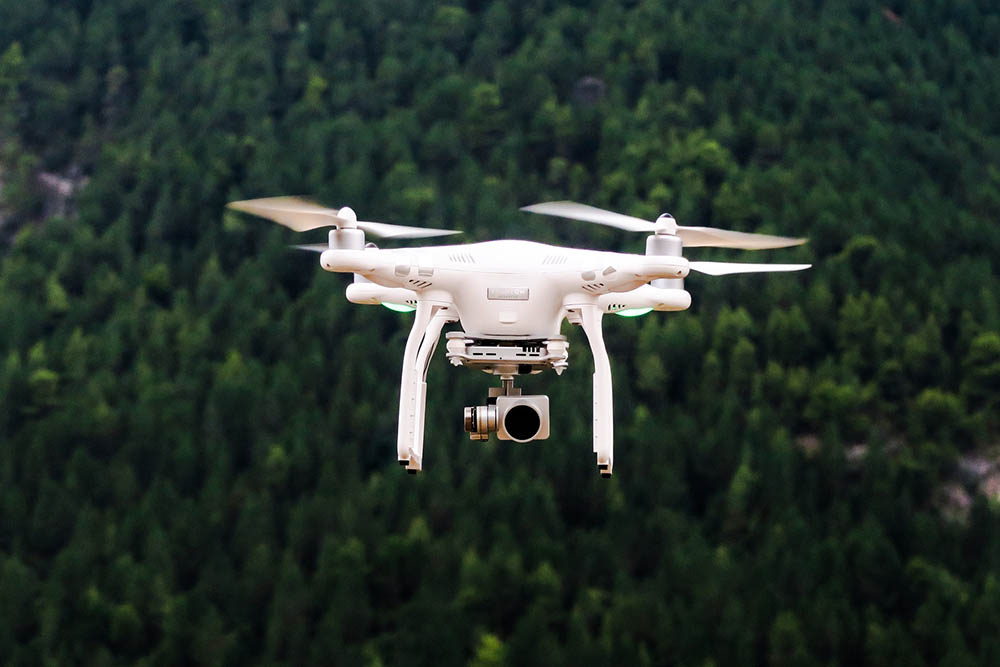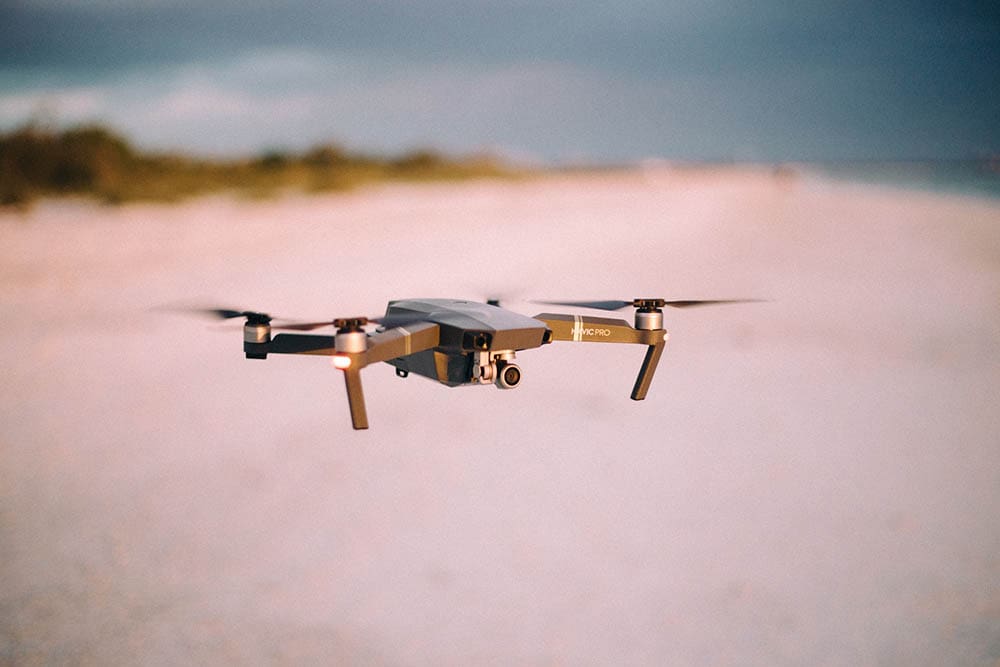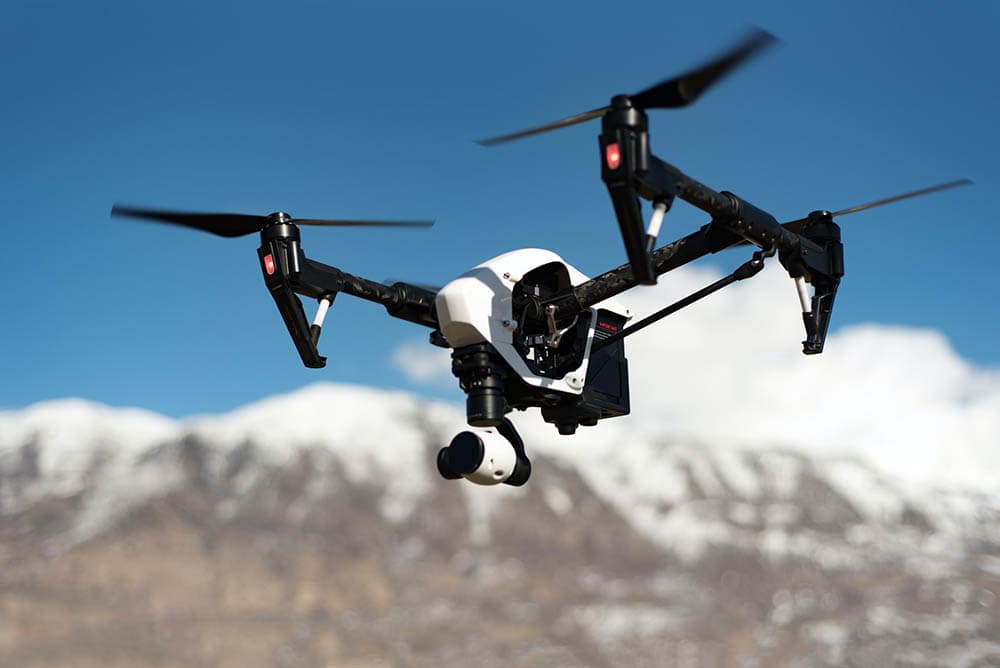How Much Does a Drone Cost in 2024?
Last Updated on

Who could have guessed how popular drones would have become? According to the Federal Aviation Administration1 (FAA), there were 1,136,513 registered drones by early 2022. It’s nothing short of fantastic when you consider there were only 137,705 at the end of 2015. The numbers continue to rise, with an anticipated 8.5% annual growth.
It’s always wise to research a new hobby before diving into it. Drones are no exception since it takes some skill to use them. Unlike many activities, you must get an FAA license2 for your craft if it is over 0.55 pounds. You must also take the Recreational UAS Safety Test (TRUST).
If you’re new to the sport, we recommend starting with an inexpensive drone for under $20. Try it out indoors, where you’re less likely to lose it. Consider upping your game after you’ve mastered using one for beginners.

Benefits of Getting a Drone
Operating a drone will improve your hand-eye coordination, not unlike playing video games. You’ll find it enjoyable and get many benefits from being in the great outdoors, whether you’re competing or just want to get some interesting pictures from a different angle.
It’s also an excellent hobby to share with your kids. Educators have embraced the technology to teach their students about various topics in innovative ways, from geography to ecology to photography. The FAA recognizes how useful drones can be and makes provisions for them in the federal regulations, putting them in the same category as recreational flyers.

How Much Does a Drone Cost?
We’ll preface the topic of drone costs by saying that the sky is the limit—it all depends on how much you want to pay. The technology continues to improve with new features, better handling, and finer resolution. As a general rule of thumb, the more you spend, the more bells and whistles you’ll get. However, price doesn’t necessarily mean quality.
You’ll find specialized products better suited to some users than others. For example, you’ll see some drones outfitted for competitive racing. These first-person view (FPV) drones put the pilot in the driver’s seat, typically using goggles or a headset. Camera drones emphasize computing ability, optics, and stability. These upgrades are reflected in the price tag.
| Type | Cost | Pros | Notable Features |
| Beginner Drones | Under $100 | ●Indoor/outdoor
●Registration not necessary for smaller crafts |
●3-axis stabilizer gimbal for stability
●Flight times up to 30 minutes ●One-key take off/landing |
| Entry-Level Camera Drones | Under $500 | ●Improved stabilization
●Longer flight times ●Longer video transmission |
●12MP and better camera sensor
●1080p to 2.7K video resolution ●More picture modes |
| Expert-Level Camera Drones | Under $1,000 | ●Improved control
●Advanced smartphone features ●GPS-enabled |
●Obstacle avoidance sensors
●Automated flight features |
| Professional-Quality Drones | Over $1,000 | ●Upgraded internal processing
●Customization options |
●6K to 8K video recording
●Advanced obstacle avoidance |
| Entry-Level Racing Drones | Under $500 | ●Aerodynamic design
●Precision control ●Faster flight speeds |
●GSP-enabled
●Full flight kit ●FPV headsets |

Additional Costs to Anticipate
Once you start getting into the higher price points, a drone essentially becomes a vehicle. Expert drone operators will trick out their crafts with cameras and other accessories. One of the best things about more expensive drones is the number of additional sensors they typically have. However, you spend a lot more on additional costs for replacement parts.
Beginner products often include spare propellers for a reason. It’s not a matter of if you crash your drone, but when you crash your drone. We recommend investing in some extras to have on hand if that happens. The same advice applies to batteries. Drones typically are rechargeable, but you may need some for the remote. These costs will vary depending on your craft and kit.
We mentioned that you need a license to fly drones. It’s certainly not going to break the bank at $5 every three years. However, if you fly your drone commercially, you’ll have to pony up for the $175 fee for the FAA’s Part 107 exam. You’ll have to retake the test every two years to keep it current and download the free B4UFLY Mobile App before flying your drone.
We hope you never face these costs, but there is a price if you fly your drone recklessly in protected air space or, heaven forbid, hurt someone. You must label your drone with its identification number and carry proof of registration with you, even as a recreational user.
Is There Drone Insurance?
Believe it or not, there is such a thing as drone insurance. It’s a good thing, too, since you can get in trouble with these devices if you’re not careful. You can find on-demand policies to cover a single flight or opt for a monthly plan. It’s not expensive, with some being less than $10 per flight. Even an annual policy isn’t much, usually falling well under $1,000 per year.

Conclusion
Many people have caught the drone bug and have made the plunge. Luckily, it does cost quite a bit to your toes in the water. You can spend less than $20 to see if this hobby is for you. As with most hobbies, you can spend as much or as little as you want. The popularity of drones has made them more affordable. Now it’s easier than ever to get a bird’s-eye view of the world.
Featured Image Credit: Jason Blackeye, Unsplash
About the Author Chris Dinesen Rogers
Chris has been writing since 2009 on a variety of topics. Her motto with all of her writing is “science-based writing nurtured by education and critical thinking.” Chris specializes in science topics and has a special love for health and environmental topics, and animals of all shapes and sizes.
Related Articles:
How to Clean a Refractor Telescope: Step-by-Step Guide
How to Clean a Telescope Eyepiece: Step-by-Step Guide
How to Clean a Rifle Scope: 8 Expert Tips
Monocular vs Telescope: Differences Explained (With Pictures)
What Is a Monocular Used For? 8 Common Functions
How to Clean a Telescope Mirror: 8 Expert Tips
Brightfield vs Phase Contrast Microscopy: The Differences Explained
SkyCamHD Drone Review: Pros, Cons, FAQ, & Verdict
